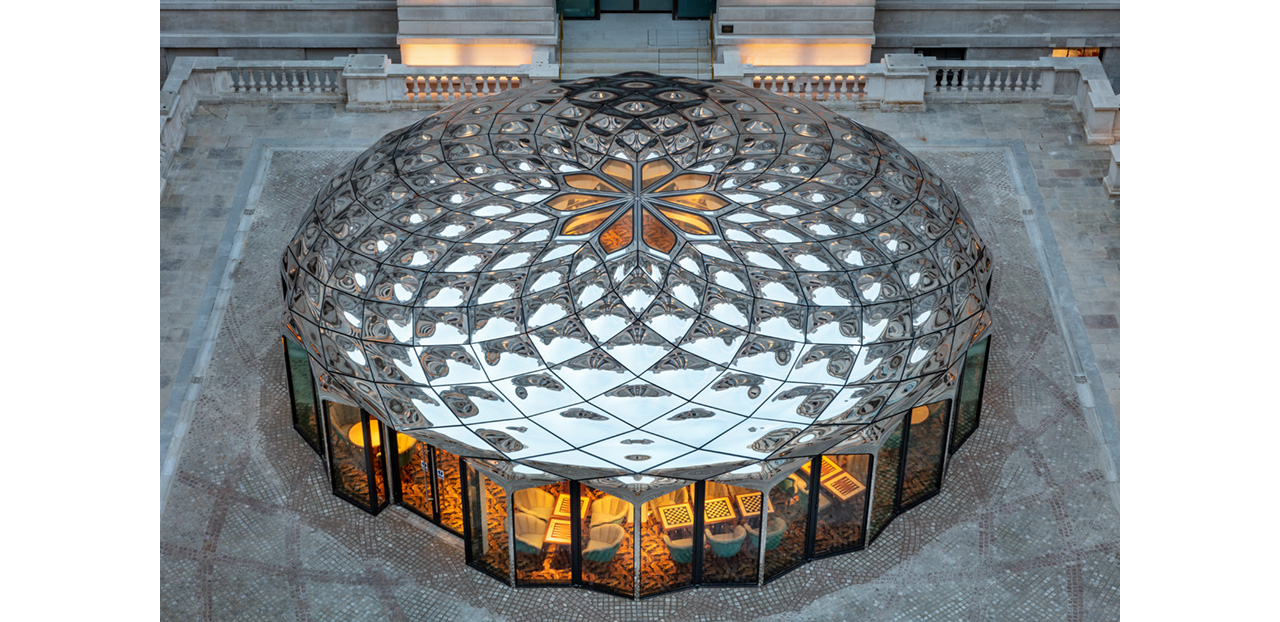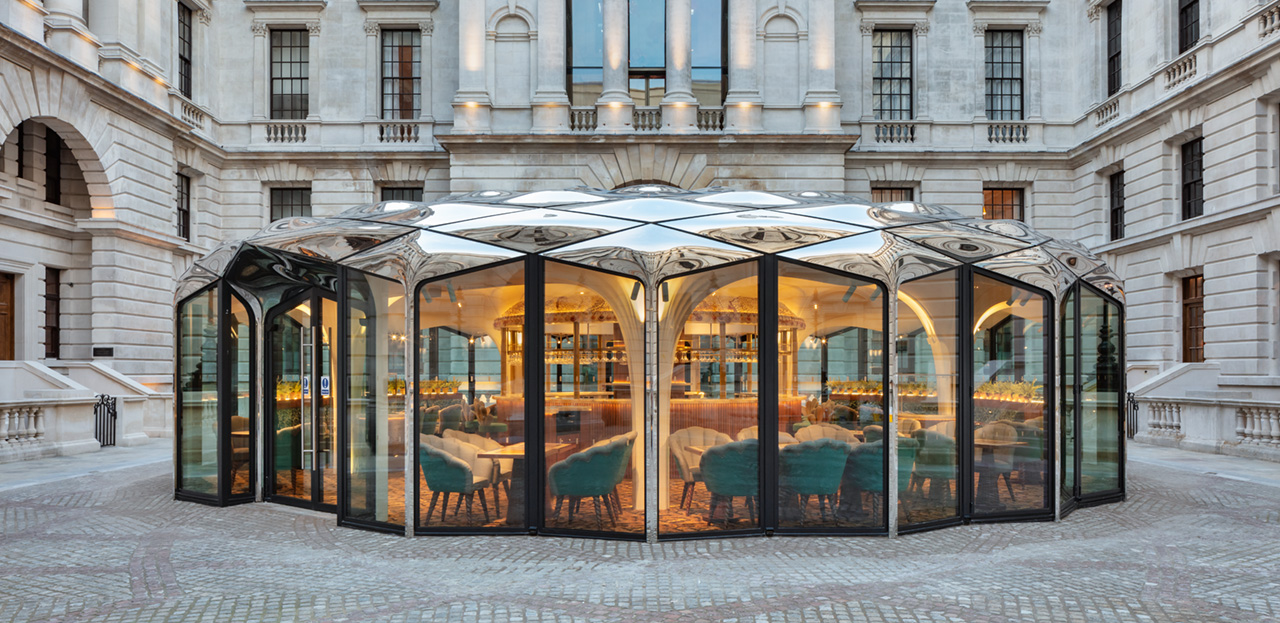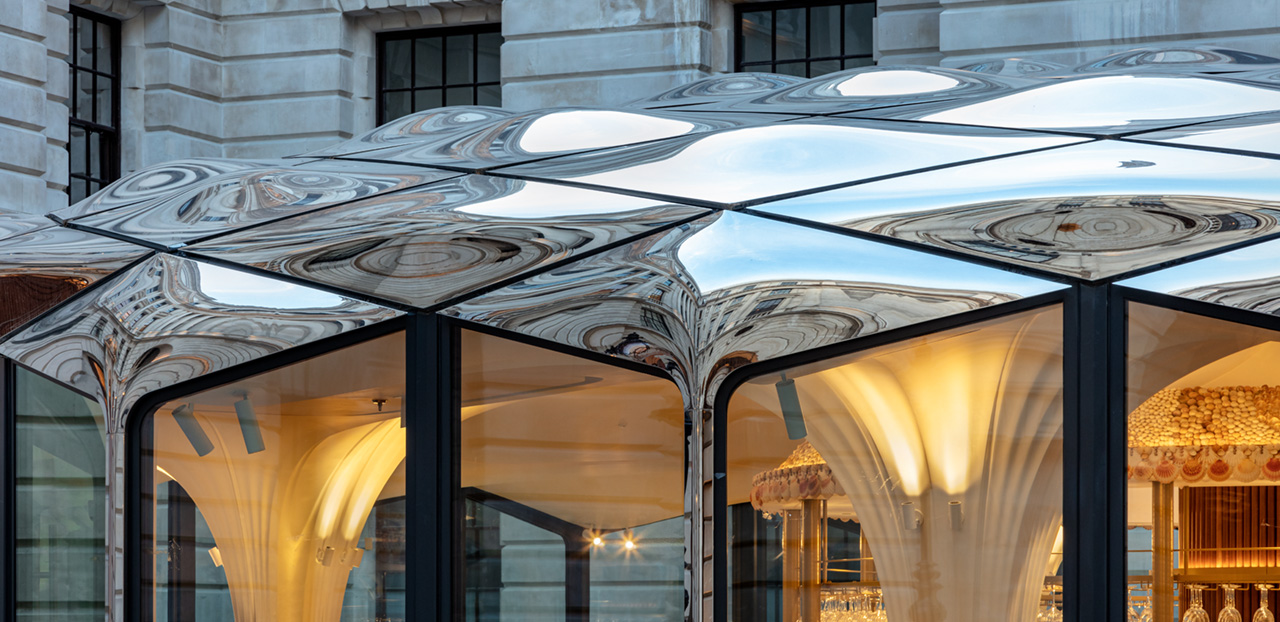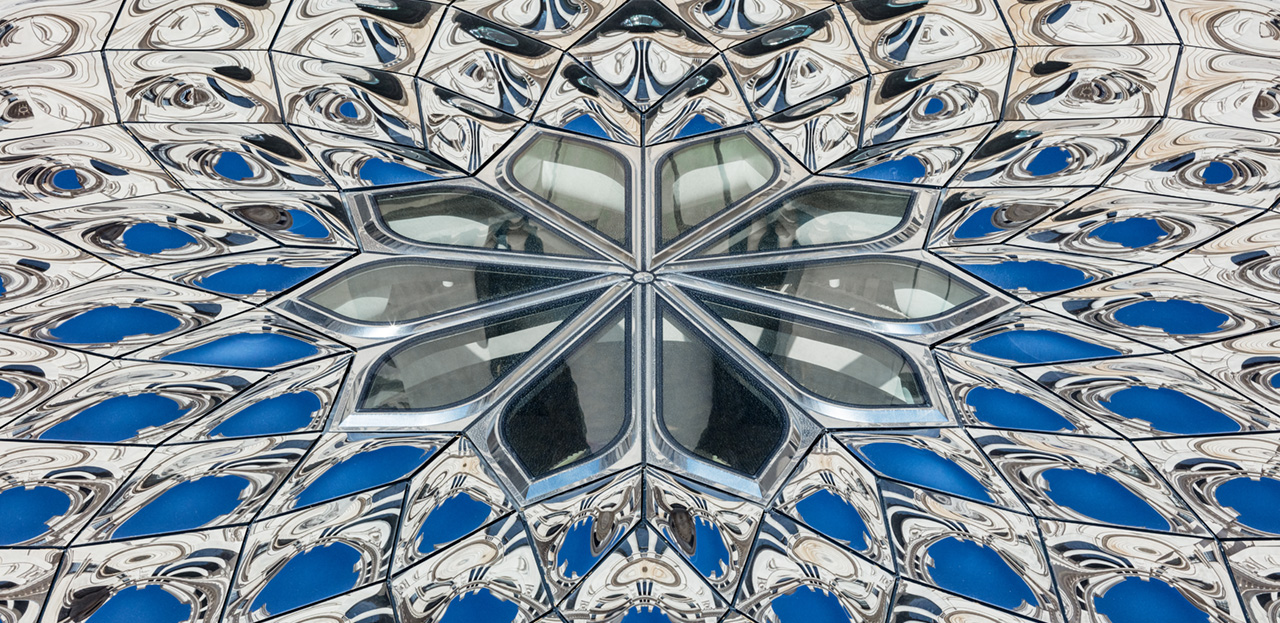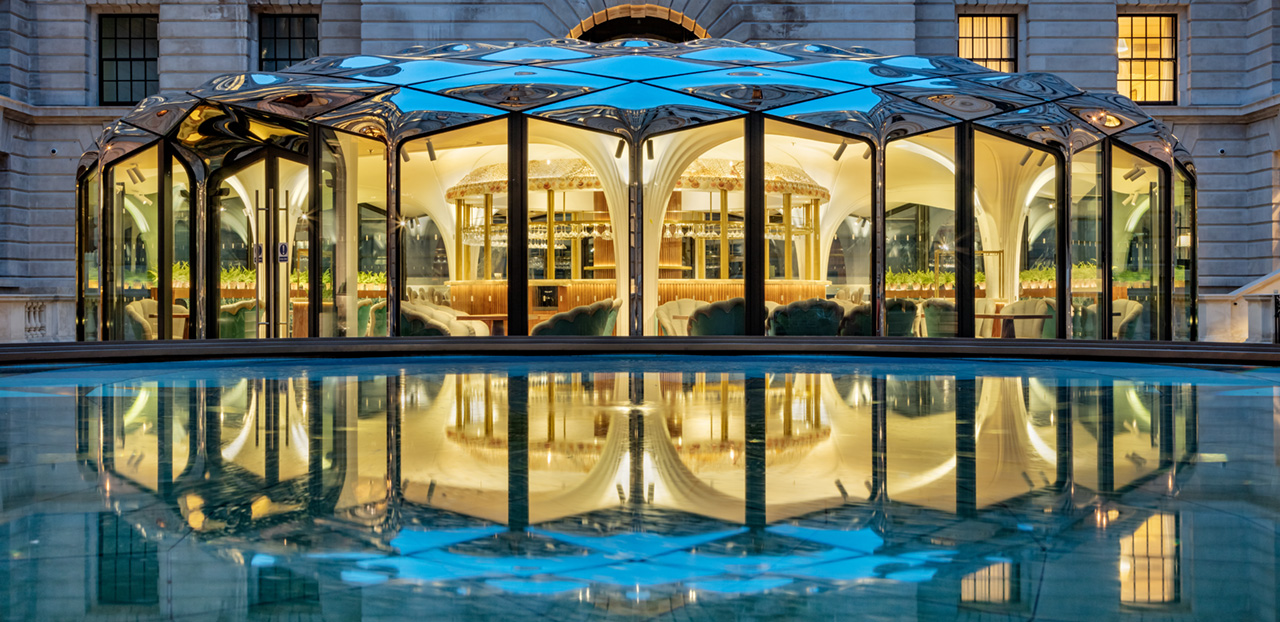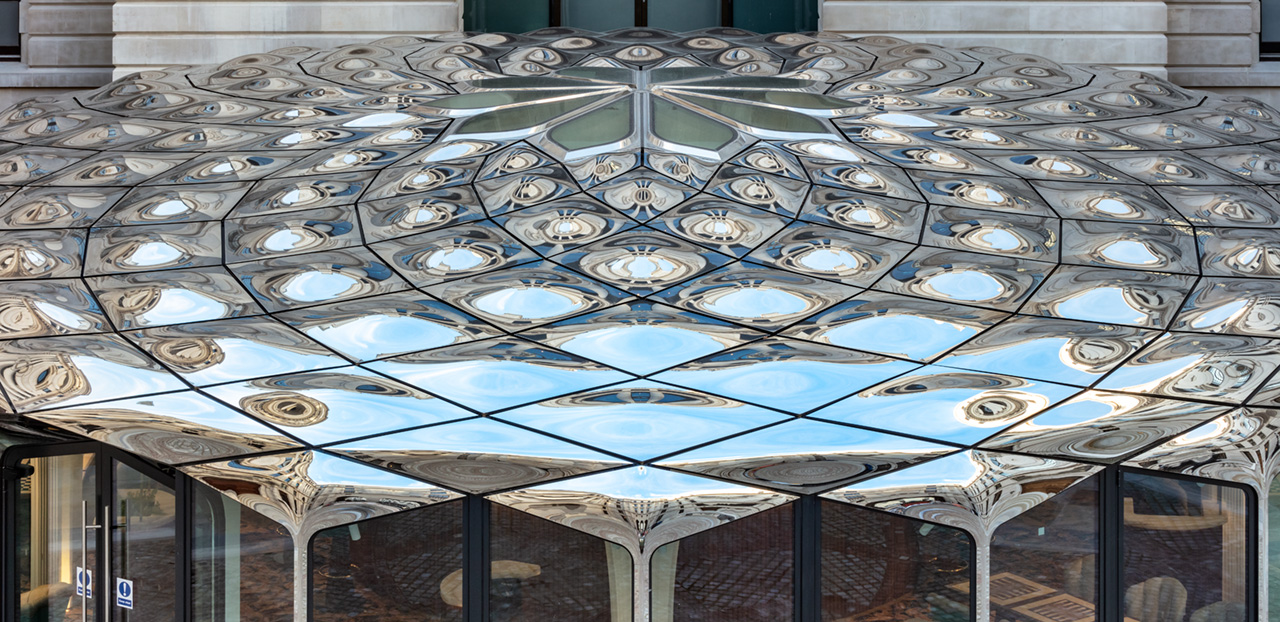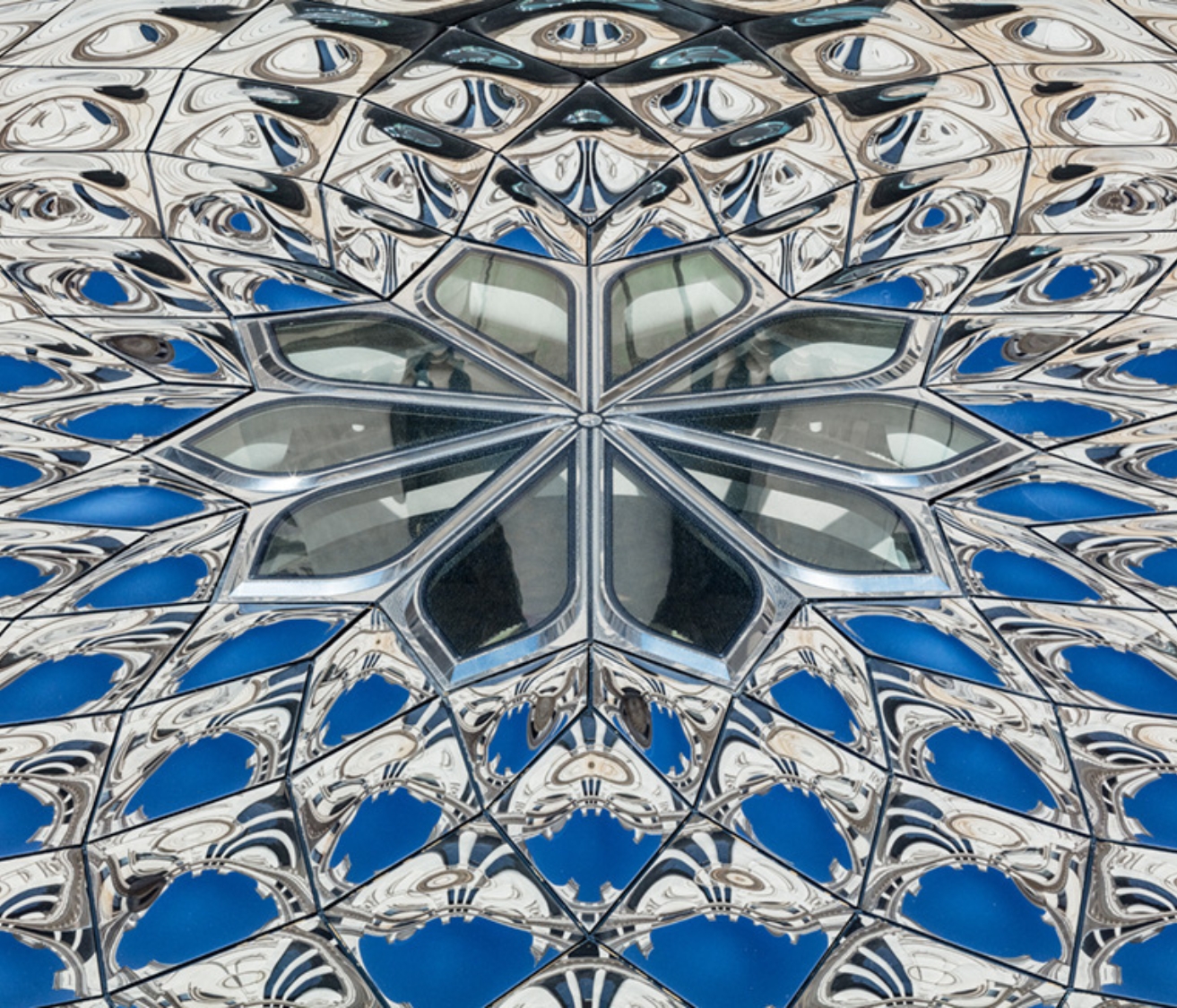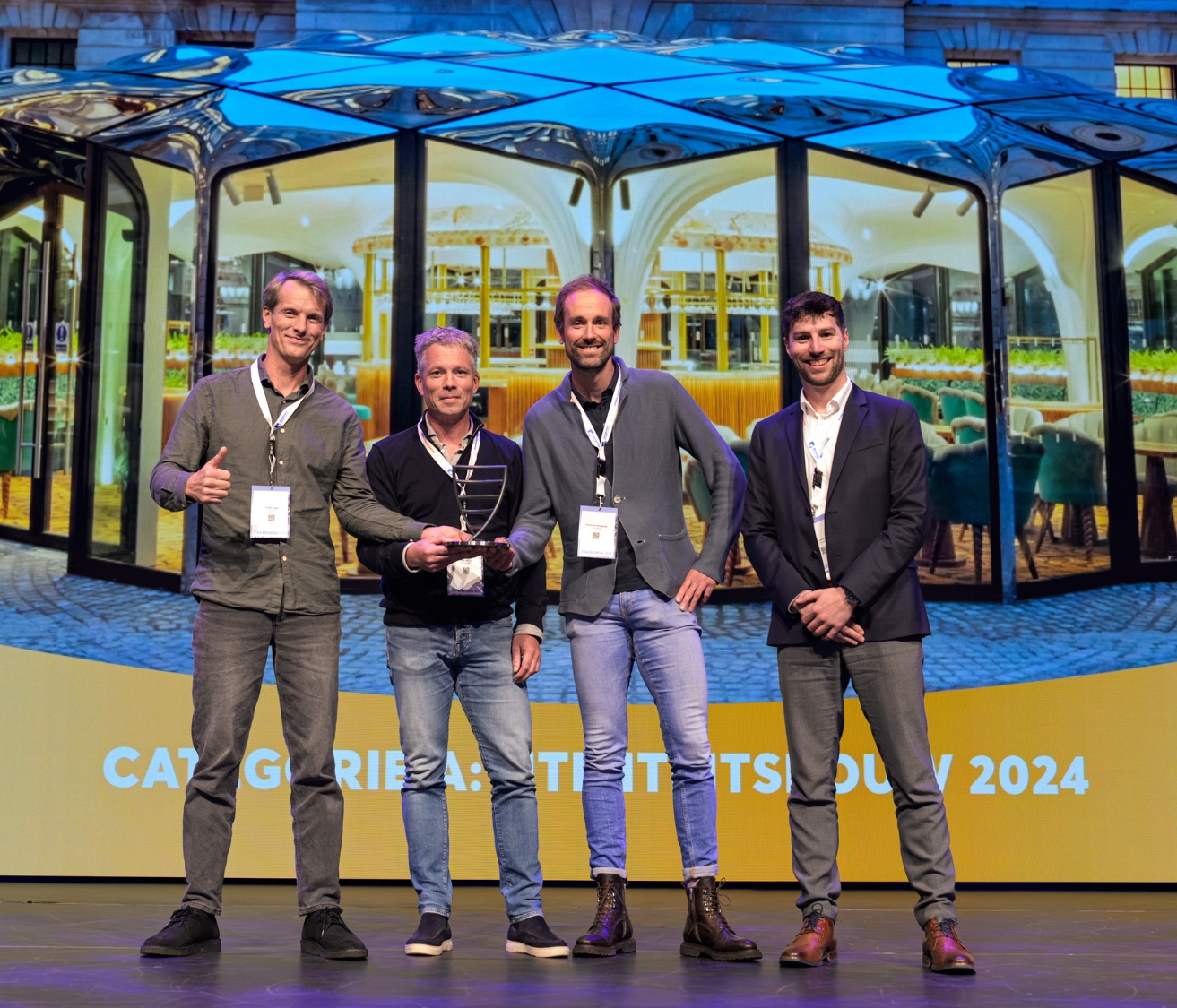The OWO Courtyard Pavilion
A new and contemporary pavilion has been realised in the Grand Courtyard of The OWO, the former Old War Office in Whitehall, London. The poetic design by DaeWha Kang Design features shiny mirror-polished 3D stainless steel roof panels, giving the pavilion its striking appearance. Octatube translated the highly bespoke design into a technical proposal and was appointed with engineering and building it.
The Old War Office, a Grade II* listed building in London, holds important political and historical significance. However, it has remained vacant for several years. The Neo-Baroque building has now been fully transformed into The OWO, a new venue offering 85 residencies by Raffles, nine restaurants, three bars, and a 120-room Raffles London hotel. The courtyard pavilion houses the French restaurant Café Lapérouse.
Mathematical geometry
The architect designed the pavilion as both a sculpture and a building, thoughtfully integrating it into its surroundings. On the circular roof of the pavilion 3D shaped mirror-polished stainless steel panels form a mathematical pattern, resembling the pattern found on sunflowers. The rippling pattern creates a mirage effect, adding lightness and dynamism to the historical setting. The extraordinary geometry has no straight lines and called for bespoke solutions and clever craftmanship.
3D fabrication model
Throughout the design phase, we provided technical support and assisted the client’s team evaluating the feasibility of the proposed bespoke solutions and the de-risking of the project. We developed a fabrication model derived from the architect’s designs, using it to discuss complex geometric details and interfaces. This allowed the project team to easily visualise the roof’s shape and pinpoint potential challenges during fabrication and installation. We refined the complex geometry while adhering to the design intent. Utilising 3D modelling at every stage of the process proved successful.
Mirror-polished 3D panels
Creating mirror-polished stainless steel 3D panels is particularly challenging, especially when welding 2mm thick panels. Stainless steel tends to deform under heat, necessitating the use of specialised tools and equipment. Furthermore, any scratches or dents on the surface can compromise their visual appearance, making them unsuitable for use.
Creating and delivering 202 mirror panels required pushing supply chain limits. We collaborated with skilled manufacturers to produce panels true to the 3D model using state-of-the-art manufacturing techniques like hydraulic 3D pressing, high quality laser cutting, and craftmanship like stainless steel welding, hand polishing, and structural gluing.
To ensure that the panels remained free flawless, they were carefully protected immediately after pressing and inspected multiple times before reaching the construction site. Upon arrival, the panels were installed with full protection, utilising specialised detailing and techniques to ensure a precise and secure fit.
Dismountable
From the outset, being abl dismantle the structure was a guiding principle that influenced every aspect of the pavilion's design and detailing. By avoiding on-site welding and using only bolted connections, the structure can be completely dismantled and reassembled at another location without the need to reproduce elements. This extends the material lifecycle and also reduces waste and environmental impact.
The emphasis on reusability and material efficiency not only enhances the pavilion's sustainability credentials but also sets a benchmark for future projects that seek to balance architectural innovation with environmental responsibility.
The 3D panels are only 2 mm thick. However, a 20 mm edge makes them appear heavy and solid. This edge conceals a custom-made substructure. Using Z-shaped bent steel profiles on clever consoles, adjustability has been devised in a way the panels could be placed with a tolerance of 2 mm. The fixing system is impkemented with structural bonding and stud welding and is optimised to avoid visible connections in the steel.
Complex vertical stems
The mirror roof visually extends downward into a plinth made of 42 vertical ‘stems,’ which were challenging to produce. Each consists of two pieces, features complex geometry, and is pre-bent in a welding jig to get and keep them straight.
The façade is designed slender and lightweight by avoiding load transfer from the roof. The slim multiform façade mullions act as tensile elements and serveas tent cords preventing upward deformation rather than supporting compression. The façade keeps the roof under tension, thus limiting the deformation of the pavilion and ensuring both stability and aesthetic consistency.
The façade mullions are minimised as much as possible despite their multifunctional purposes: they support the window frames, \carry the roof and provide insulation. Aditionally, rainwater drainage channels are incorporated.
Transparent façade
The pavilion steel structure consists of five steel columns with extending arms. Ten curved roof shells rest on top of this framework and are topped by the stainless steel 3D panels. The vertical faces of the façade below are feature double-insulated glass panels to meet thermal performance requirements. A gradated mirror finish is applied at both top and bottom of the glass, blending the transparent wall seamlessly with the mirrored roof. This enhances the building’s energy performance, creates a more transparent middle section of the glass and minimises visual clutter at floor level. The frames are made of darkened stainless steel, providing a contrast to the mirror finish stem panels and roof.
Real-size visual mock up
We created a full-scale visual mock-up (VMU) that integrated multiple details. We ensured that everything included in this VMU was pre-engineered to avoid any modifications during the final engineering phase. Both the engineering and the detailed VMU were completed simultaneously, within the short time frame of four months, meticulously working out even the smallest engineering details.
Skylight
A custom-built skylight in the centre of the pavilion allows daylight to enter. We crafted its steel frame with highly bespoke detailing down to the millimetre. The unique shapes necessitated manual welding and polishing. It was lifted into the roof structure in a single hoist and fitted perfectly.
Precision alignment
Properly aligning and joining the panels is a major challenge when building a 3D-formed rainscreen roof. Misalignment or gaps can ruin the installation and aesthetics. Our engineering and construction teams collaborated during the design phase to develop the detailing. High precision, attention to detail, and the use of tailor-made templates and fixtures helped ensure the panels were perfectly aligned during installation.
Close interplay
Designing and building a 3D-shaped stainless steel roof is complex and challenging, requires a high degree of skill, expertise and attention to detail. However, the result is stunning and a true eye-catcher: the light and the mirrors of polished steel create a dynamic and ever-changing visual experience. The durability and longevity of the material ensure that the roof will stand the test of time.
We realised this remarkable pavilion in close interplay with the architect DaeWha Kang Design, Arup, Fielitz and others. All in covid-times, where meeting in person was not possible.
Instagram @theowo.london
Photographed by Kyungsub Shin

